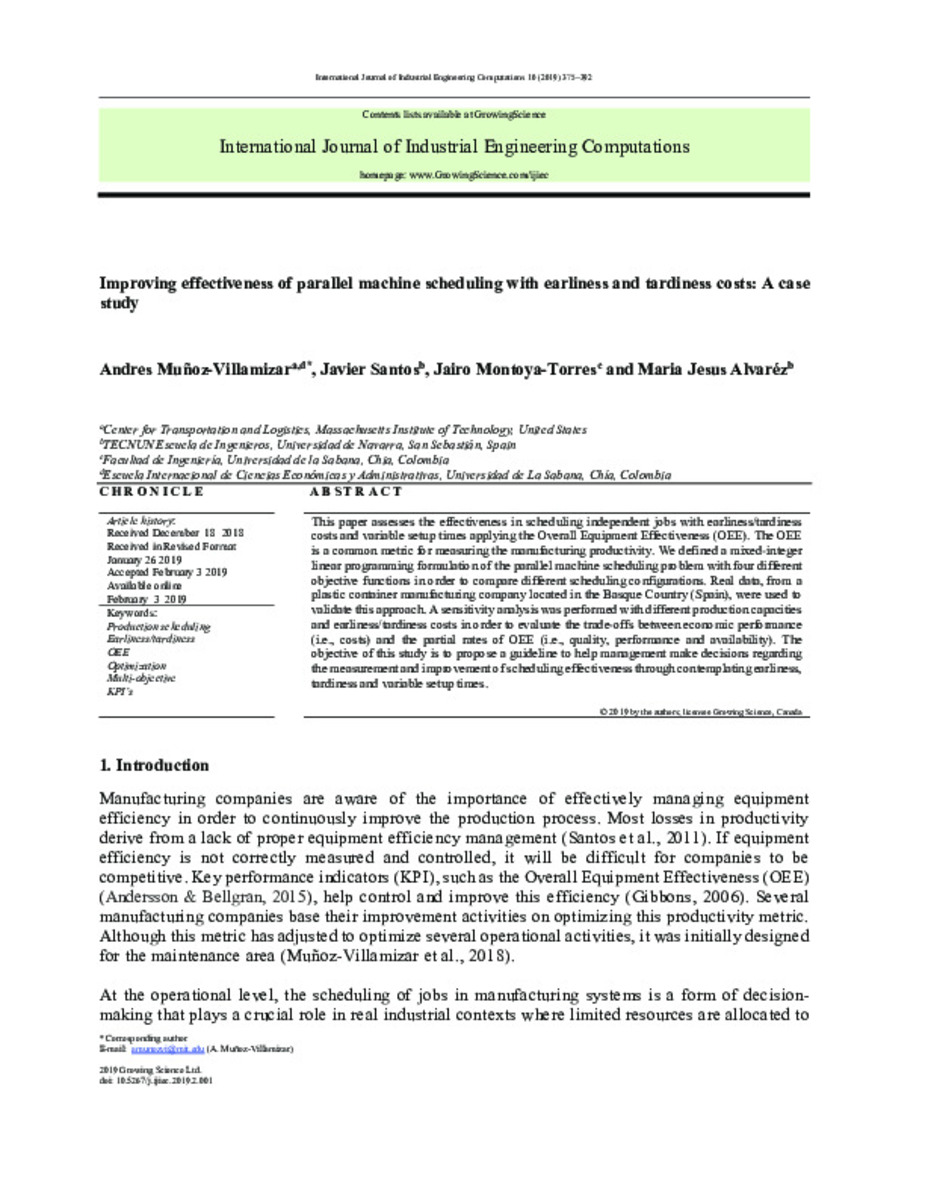Improving effectiveness of parallel machine scheduling with earliness and tardiness costs: A case study
Keywords:
Production scheduling
Earliness/tardiness
OEE
Optimization
Multi-objective
KPI’s
Publisher:
Growing Science
Note:
This is an open access article
distributed under the terms and conditions of the Creative Commons Attribution (CCBY) license (http://creativecommons.org/licenses/by/4.0/).
Citation:
Muñoz-Villamizar, A. (Andres); Santos, J. (Javier); Montoya-Torres, J. (Jairo); et al. "Improving effectiveness of parallel machine scheduling with earliness and tardiness costs: A case study". International Journal of Industrial Engineering Computations. 10 (2019), 2019, 375 - 392
Statistics and impact
0 citas en

Items in Dadun are protected by copyright, with all rights reserved, unless otherwise indicated.







